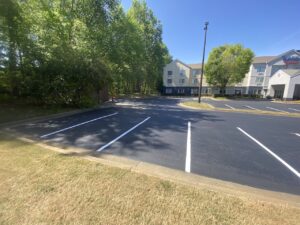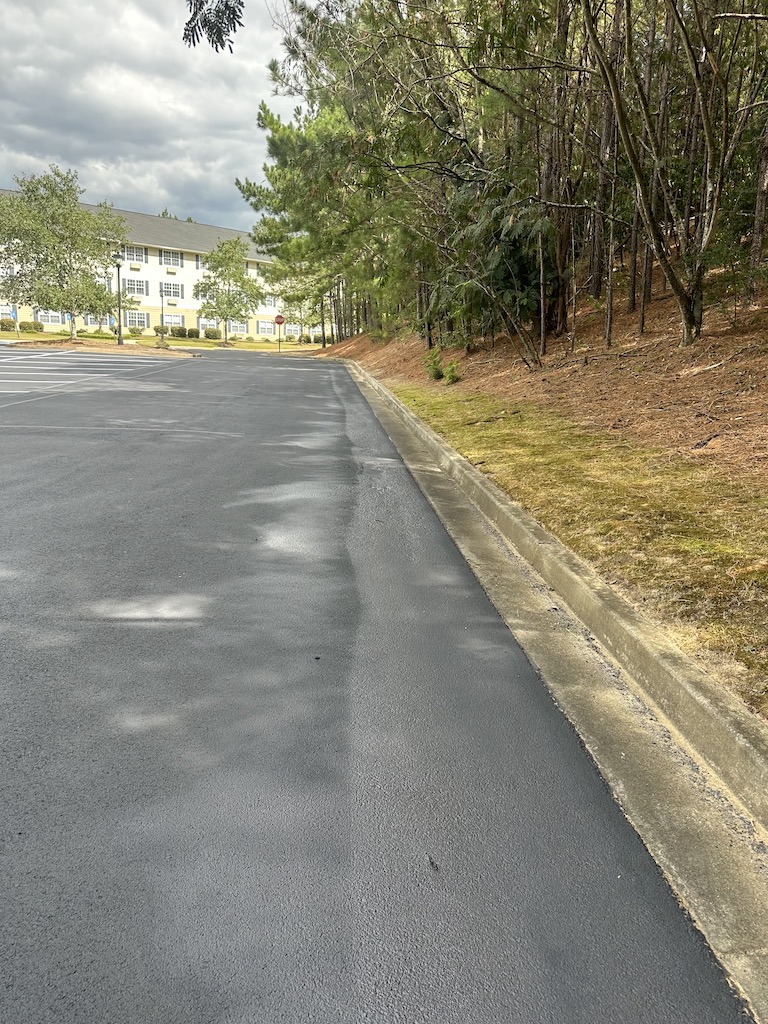
What Is the Importance of the Temperature for Atlanta Sealcoating Projects?
A sealcoating company must consider the temperature of the pavement as well as the temperature of the air. Most of the time, these two temperatures vary by only a few degrees. However, there can be occasions when the variance is significant. Experienced asphalt maintenance contractors know that they should not sealcoat a pavement unless both temperatures are at least 50 degrees Fahrenheit and rising. Furthermore, reputable sealcoating contractors realize that excessive heat can affect the curing and drying process. If temperatures are bordering on being too cool or too hot, other factors can help offset the detrimental effects of the temperature.
What Effect Does the Relative Humidity Level Have On Asphalt Pavements?
In general, the higher the relative humidity, the longer it takes for sealcoating to dry and cure. For example, a low relative humidity level can help expedite curing on a cool day, but it can make matters worse on an excessively hot day. Your sealcoating contractor needs the sealant to dry and cure at a steady, predictable rate. If temperatures are running a bit on the cool side, a high humidity level means that the drying and curing times are longer. However, if the day is extremely hot, a low humidity level can cause the sealant to flash dry. When sealants dry almost as soon as they encounter a hot pavement, the sealcoat and the pavement cannot form an adequate bond. Therefore, it is actually beneficial for the relative humidity to be as much as 85% if the day is excessively hot.
What Is the Impact of Wind Speed When Sealcoating Atlanta GA Pavements?
Sealcoating contractors typically prefer a wind velocity between 4 mph and 10 mph. As water escapes from the sealant, the air above it can become saturated, stalling the drying process. A steady breeze helps circulate the air immediately above the pavement to move saturated air away. This is especially important if the temperature is on the cool side or the humidity level is on the high side. However, a brisk wind can be a hindrance on a hot, dry day. Furthermore, if the wind is too strong, it increases the risk of an uneven application or an overspray incident.
Why Does Sunlight Matter When Sealcoating Parking Lot Pavements?
The sun generates heat, but it also renews it. Exposing a freshly sealed pavement to several hours of direct sunlight helps ensure that the curing process will proceed at the proper rate. This is one reason why many asphalt maintenance contractors refuse to apply sealants at night or on heavily overcast days.
For Professional, High-Quality Asphalt Maintenance, Contact MH Greeson
MH Greeson Paving is an experienced asphalt maintenance and sealcoating company serving most locations in Atlanta and North Georgia. Our services include asphalt crack repair, parking lot maintenance, pavement markings, parking lot striping, asphalt paving, asphalt repair, traffic signage, bollards, ADA compliance, and car stops. We have an exemplary reputation, impeccable references, and a highly experience staff. For a free quote, call 770-335-2983, email Tripp@MHGreesonPaving.com, or submit our online request form.




